The ongoing search for the missing deep-sea vessel that was viewing the wreckage of the doomed ocean liner RMS Titanic has grabbed the public’s attention and renewed its fascination with the tragic shipwreck.
The submergible vessel, operated by OceanGate Expeditions, reportedly has five people onboard and only has oxygen for up to 96 hours.
The 21-foot craft began its descent in the North Atlantic on Sunday but lost contact with the surface less than two hours later, according to authorities.
OceanGate Expeditions said in a statement late Monday that “for some time, we have been unable to establish communications with one of our submersible exploration vehicles which is currently visiting the wreck site of the Titanic.”
The company uses a submersible named Titan for its dives to the wreck, with seats priced at $250,000 apiece, according to its website.
The loss of the vessel—near the same site as the iconic lost ship—has once again ignited the public’s interest in the ill-fated luxury liner.
The White Star Line’s RMS Titanic set sail on its maiden voyage from England to New York in April 1912 with 2,224 passengers and crew on board, including some of the most famous tycoons and aristocrats of the day.
But disaster struck on the night of April 15, when the ship hit an iceberg and sank. About 1,500 passengers and crew lost their lives in the freezing waters of the North Atlantic. The lucky ones who escaped in lifeboats—of which there were not enough for every passenger—were rescued the next morning by the RMS Carpathia.
The sinking of the Titanic remains the most famous maritime disaster in history and the fourth most deadly of the twentieth century.
The disaster became popularized as an example of hubris because the ship had been touted as an “unsinkable” miracle of the industrial age.
Some also see it as an example of the Gilded Age’s class discrimination because the vast majority of the passengers who died were in Second and Third Class. In fact, more First Class male passengers survived than Third Class children, despite the crew’s instructions for women and children to be given priority in the limited number of lifeboats.
The official inquests and congressional hearings in Great Britain and the United States following the disaster led to important maritime reforms, including new laws requiring sufficient lifeboats and other safety features for ocean liners.
The wreck of the Titanic was located in 1985 by a U.S.-French expedition, which again sparked the public’s interest in the story of the legendary ship. This in turn inspired director James Cameron’s Oscar-winning 1997 movie Titanic and also galvanized a lucrative underwater tourism industry near the wreckage.
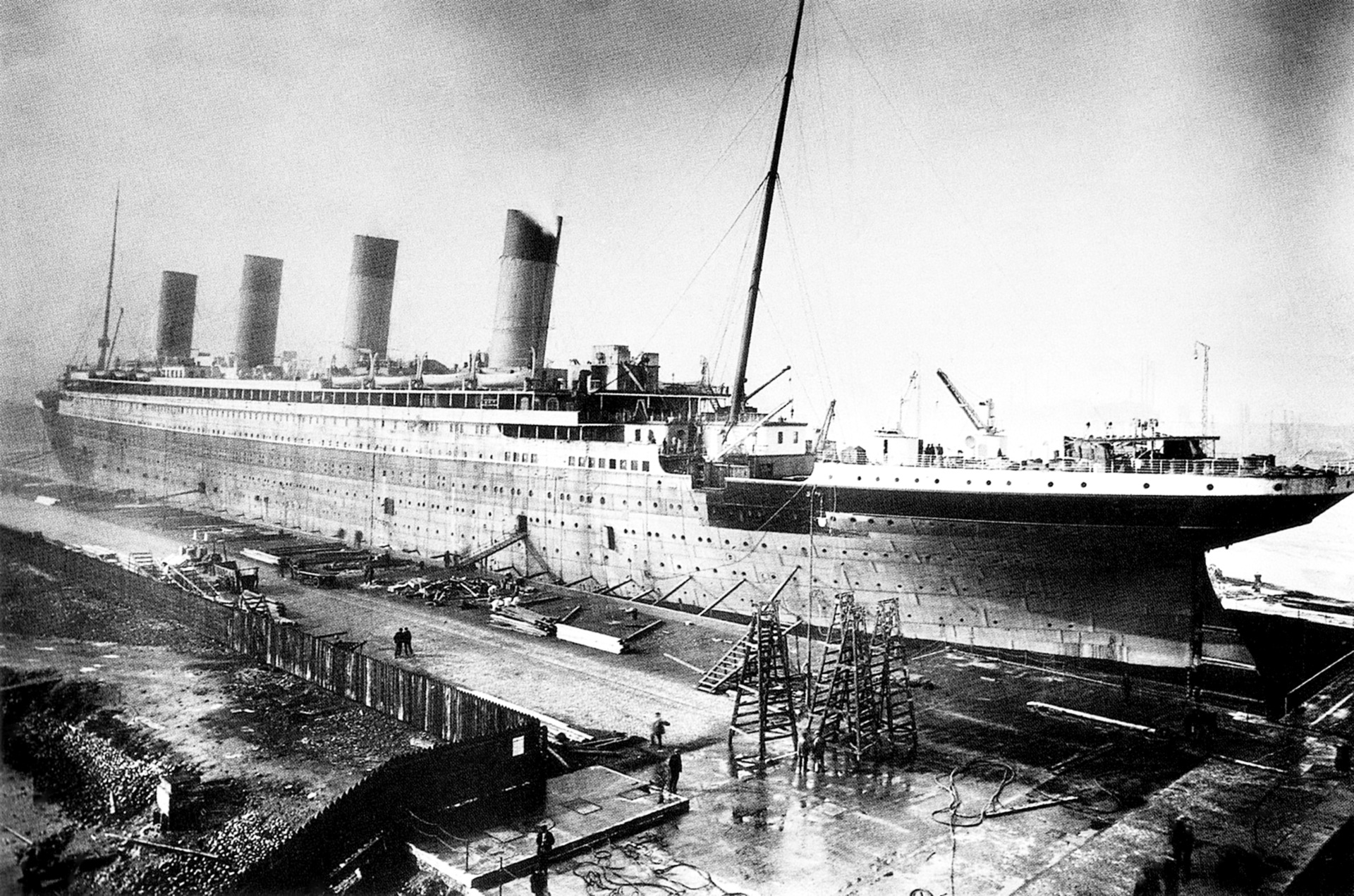
RMS Titanic being fitted out at Harland and Wolf Shipyard in Belfast, Ireland, 1911-1912. (Pictures from History/Universal Images Group via Getty Images)

The White Star luxury liner Titanic is seen here during its trials in Belfast Lough. (Topical Press Agency/Getty Images)
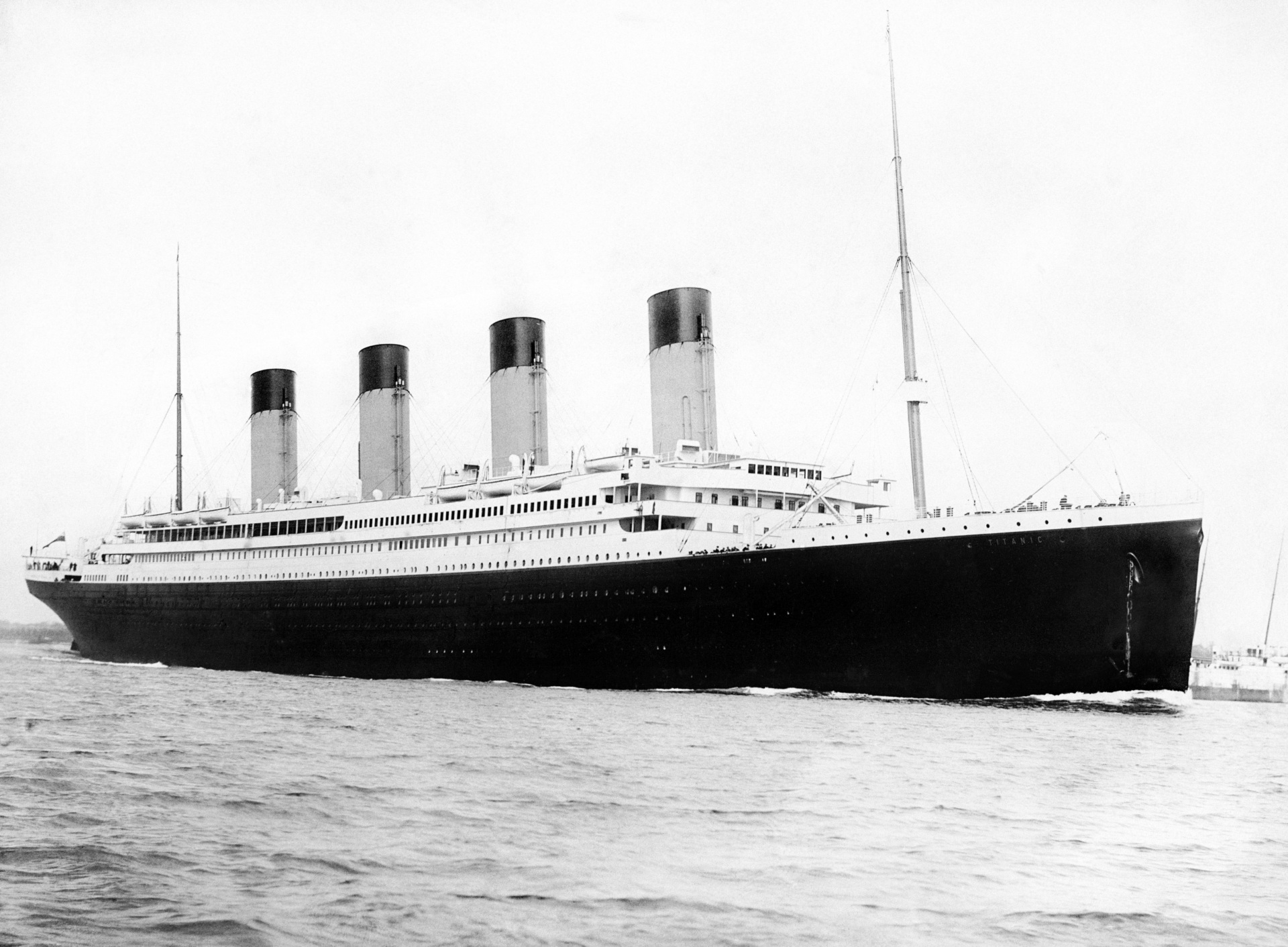
RMS Titanic is seen departing Southampton, England, on 10 April 1912. (Pictures from History/Universal Images Group via Getty Images)
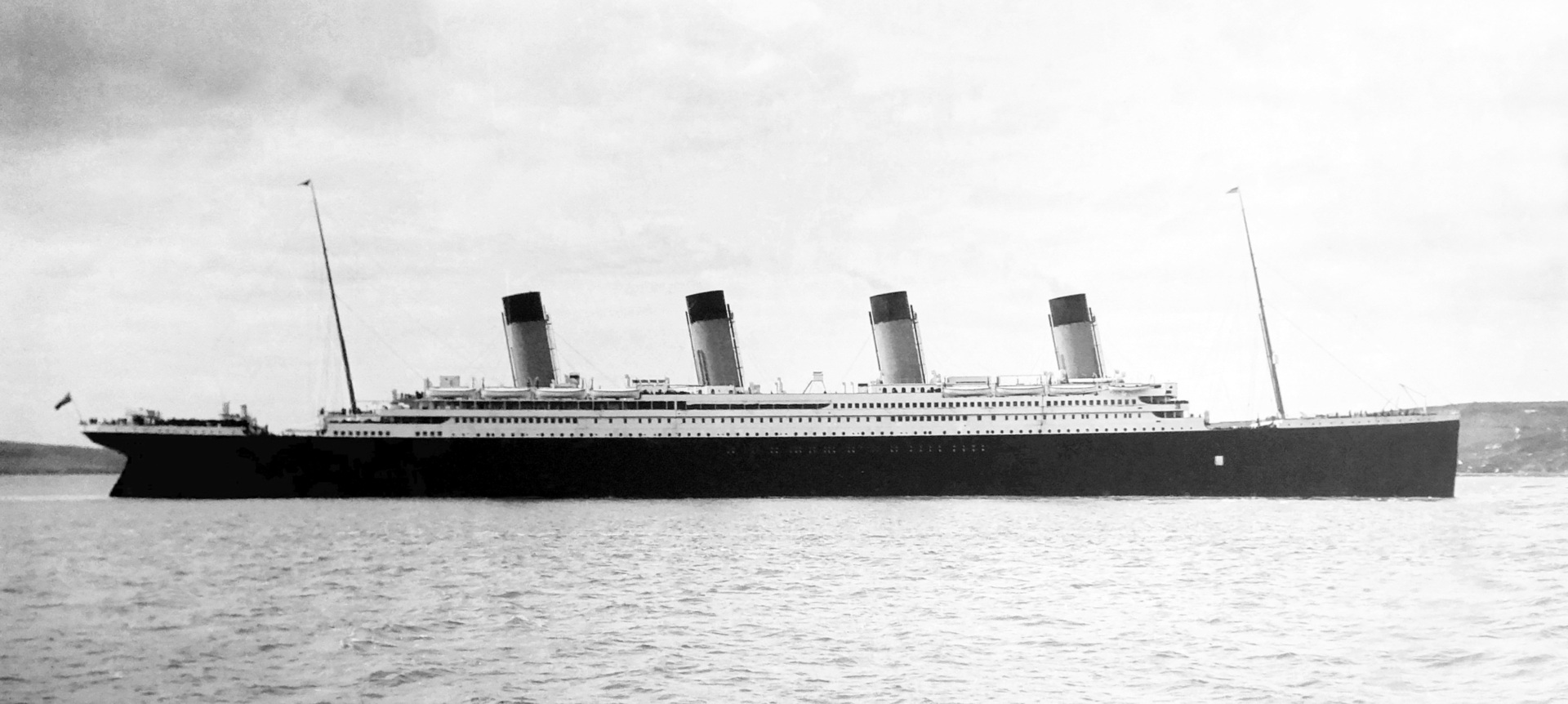
RMS Titanic in Cork harbour, Ireland, 11 April 1912, four days prior to its tragic sinking. (Pictures from History/Universal Images Group via Getty Images)

The photo’s original caption reads: “The Titanic’s passengers taking their last look at home. A photograph taken as the boat was leaving Southampton on April 10th, showing, on the deck, some of the passengers who are probably among the missing.” (The Print Collector/Getty Images)
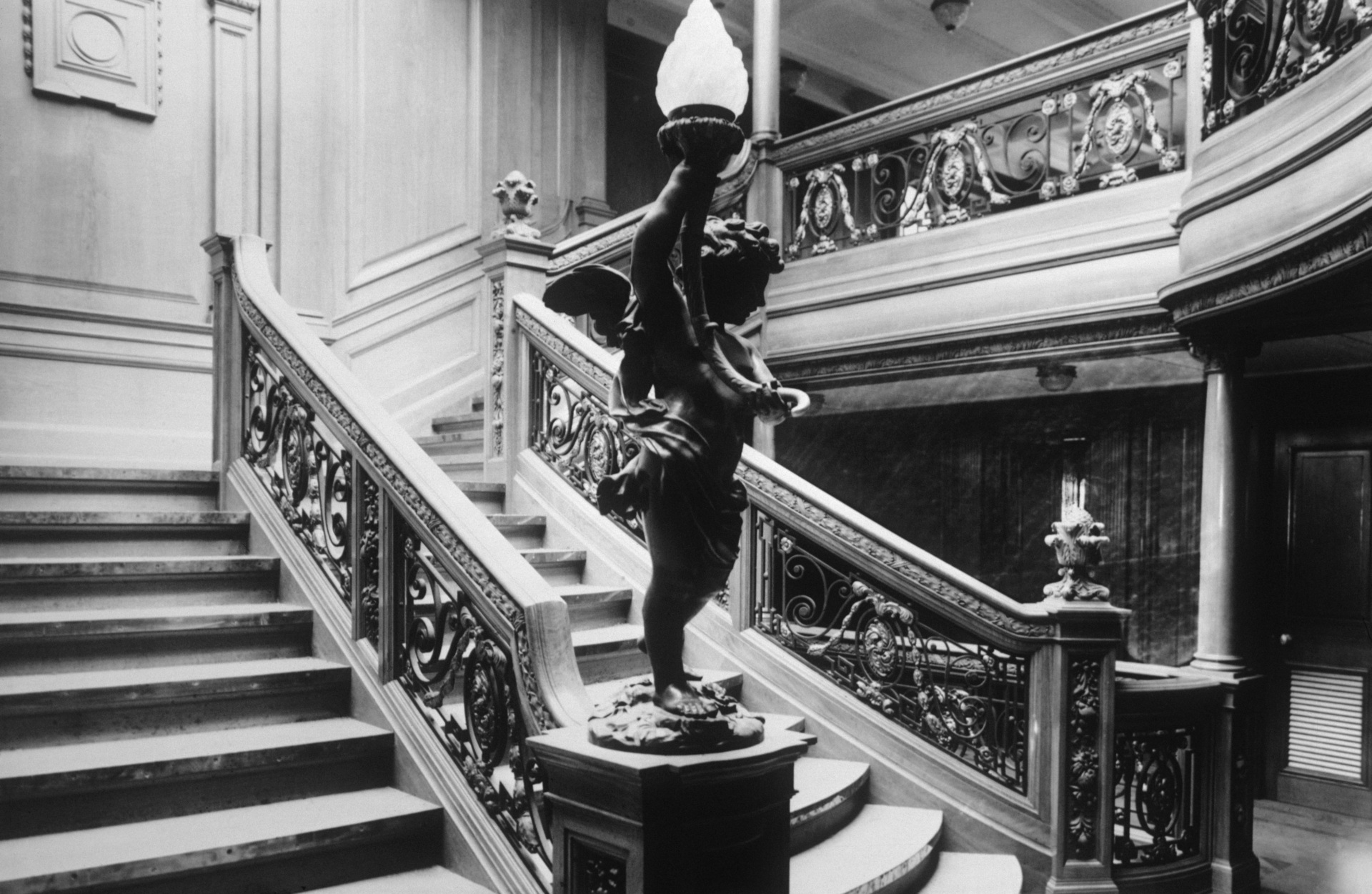
The Aft First Class staircase leading to the a la carte restaurant on the RMS Titanic, the world’s most luxurious ocean liner at the time of its launching in April of 1912. (Ralph White/CORBIS/Corbis via Getty Images)
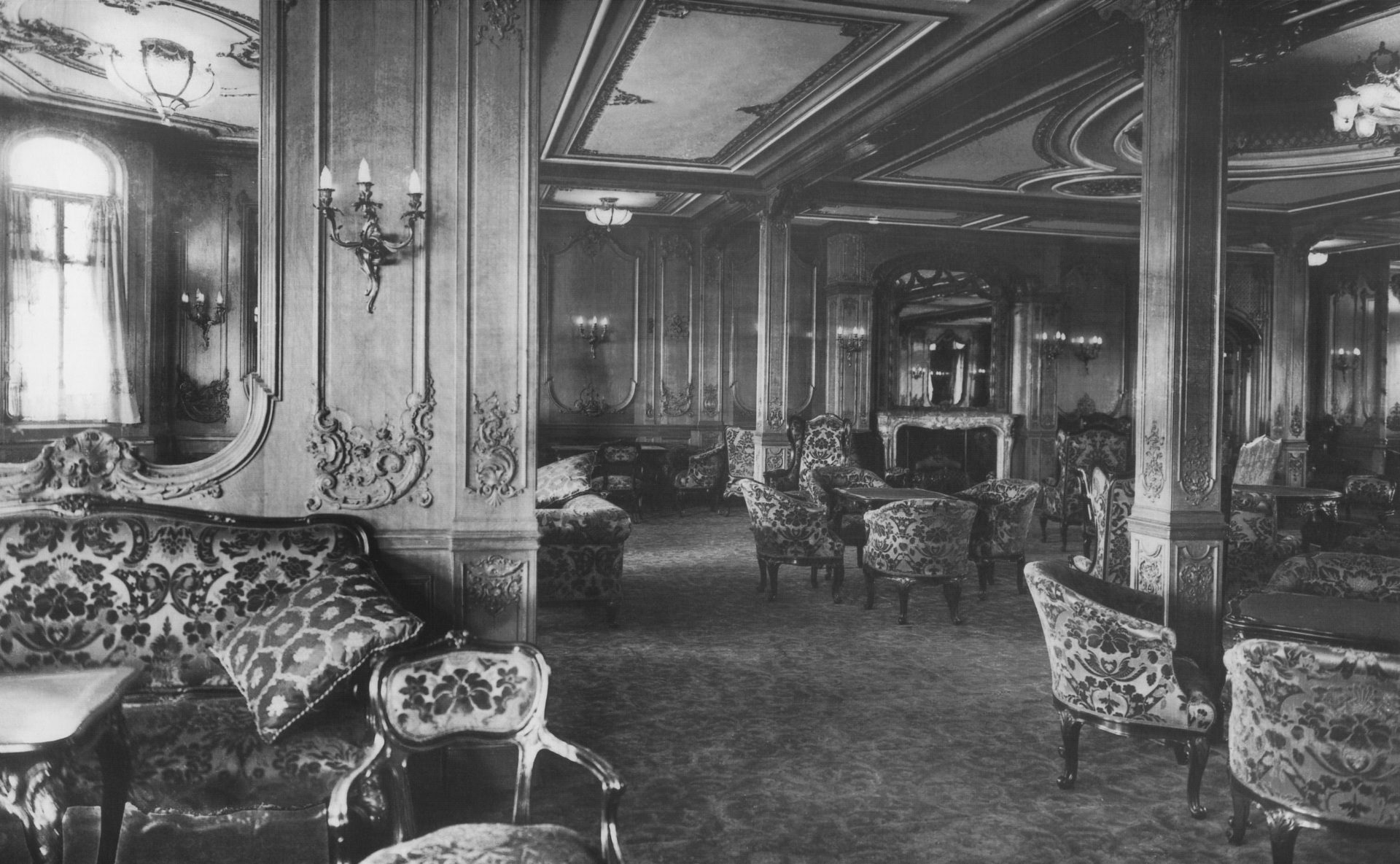
The First Class Lounge on board RMS Titanic, photographed on 4th January 1912. (Universal Images Group/Getty Images)

The gymnasium on the boat deck, which was equipped with the latest exercise machines. (Wikimedia Commons)
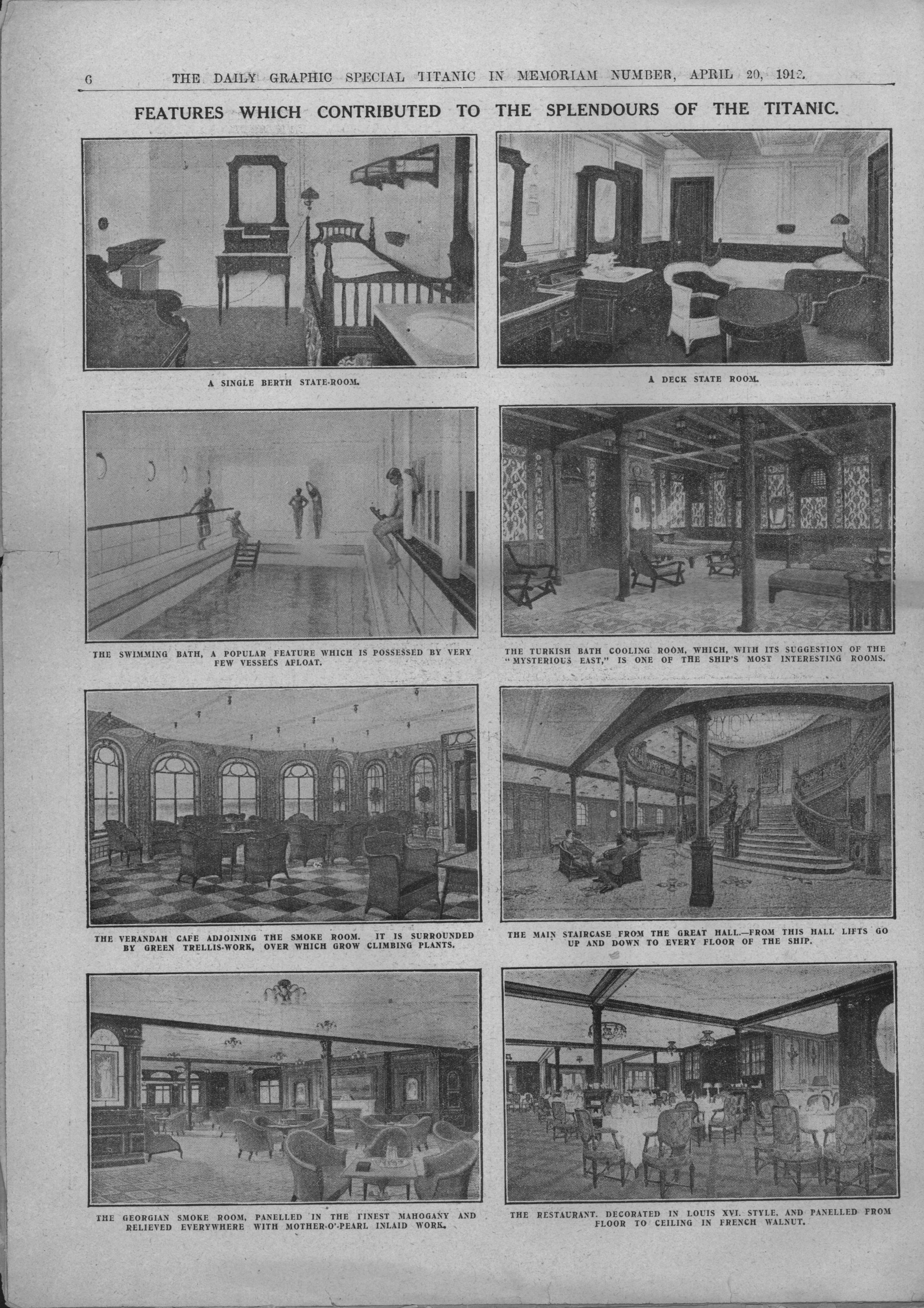
A pamphlet showing the luxury of the Titanic, including a single-berth state room, a deck state room, the swimming pool, the Turkish Bath Cooling Room, the Verandah Cafe, the main staircase, the Georgian Smoke Room and the restaurant, and luxurious interior decoration included French walnut panelling, mother-of-pearl inlay, and climbing plants. (Photo by The Print Collector/Getty Images)

Purser Hugh Walter McElroy and Captain Edward J. Smith aboard the Titanic during the run from Southampton to Queenstown. The man who took the photograph, Rev. F.M. Browne, got off at Queenstown, three days before the ship hit an iceberg and sank. (Ralph White/CORBIS/Corbis via Getty Images)
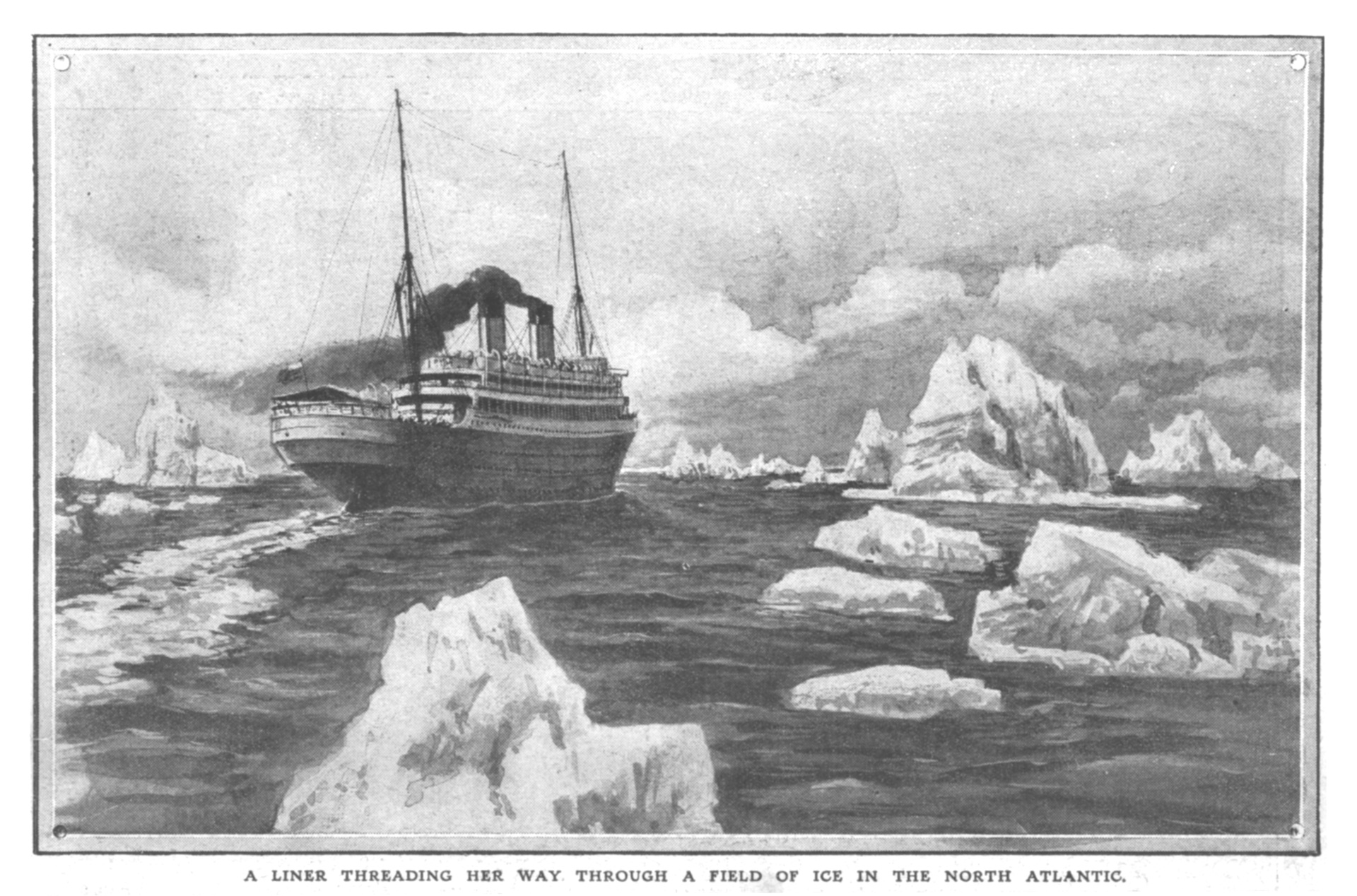
An illustration showing the Titanic “Threading Her Way Through a Field of Ice in the North Atlantic,” April 20, 1912. The White Star Line ship RMS ‘Titanic’ struck an iceberg in thick fog off Newfoundland on 14 April 1912. She was the largest and most luxurious ocean liner of her time, and thought to be unsinkable. In the collision, five of her watertight compartments were compromised and she sank. Out of the 2228 people on board, only 705 survived. A major cause of the loss of life was the insufficient number of lifeboats she carried. (The Print Collector/Getty Images)
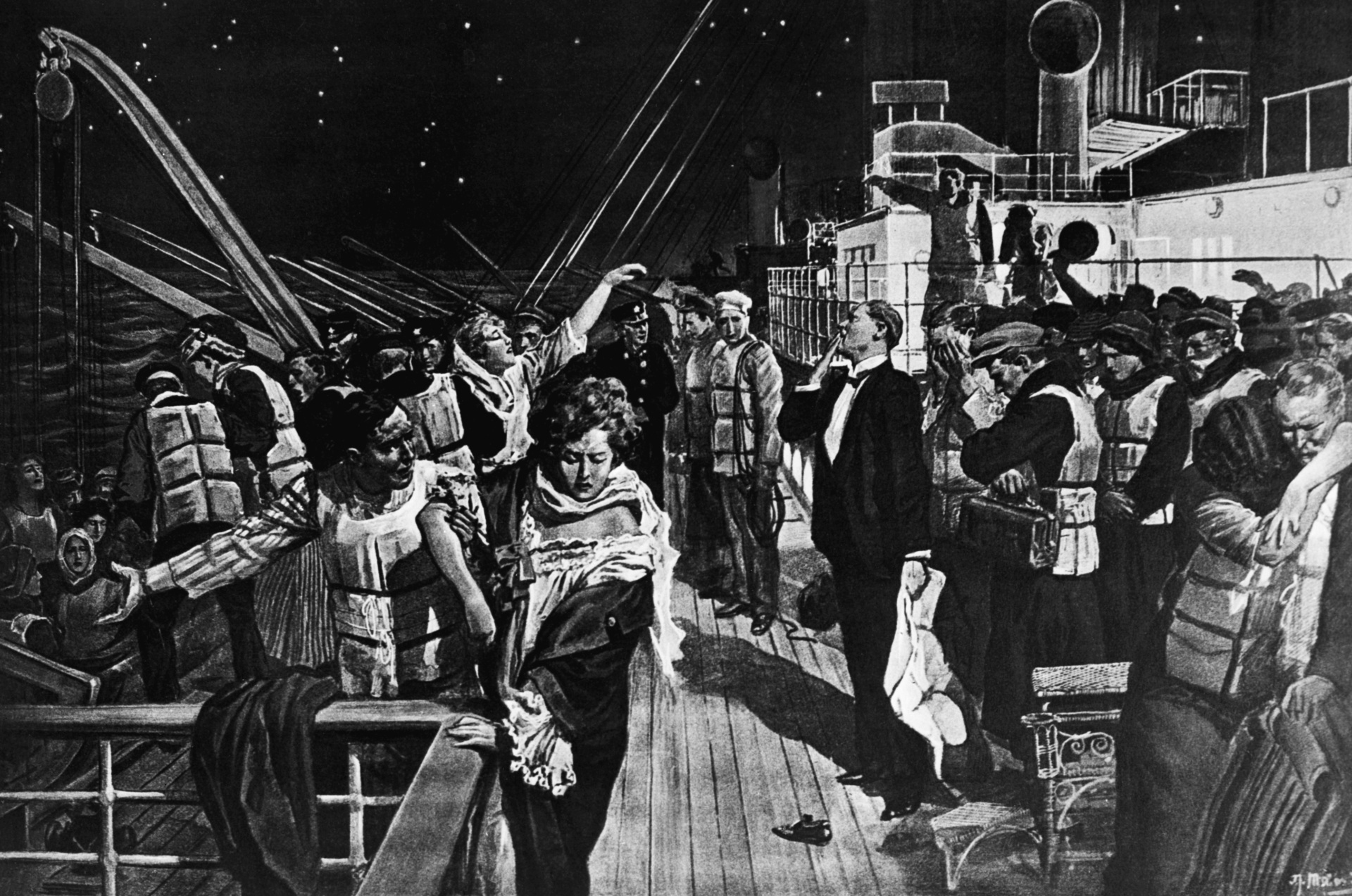
Illustration depicting women and children being loaded into life boats during the great Titanic disaster on April 14, 1912. Detail from an undated painting. (Getty Images)
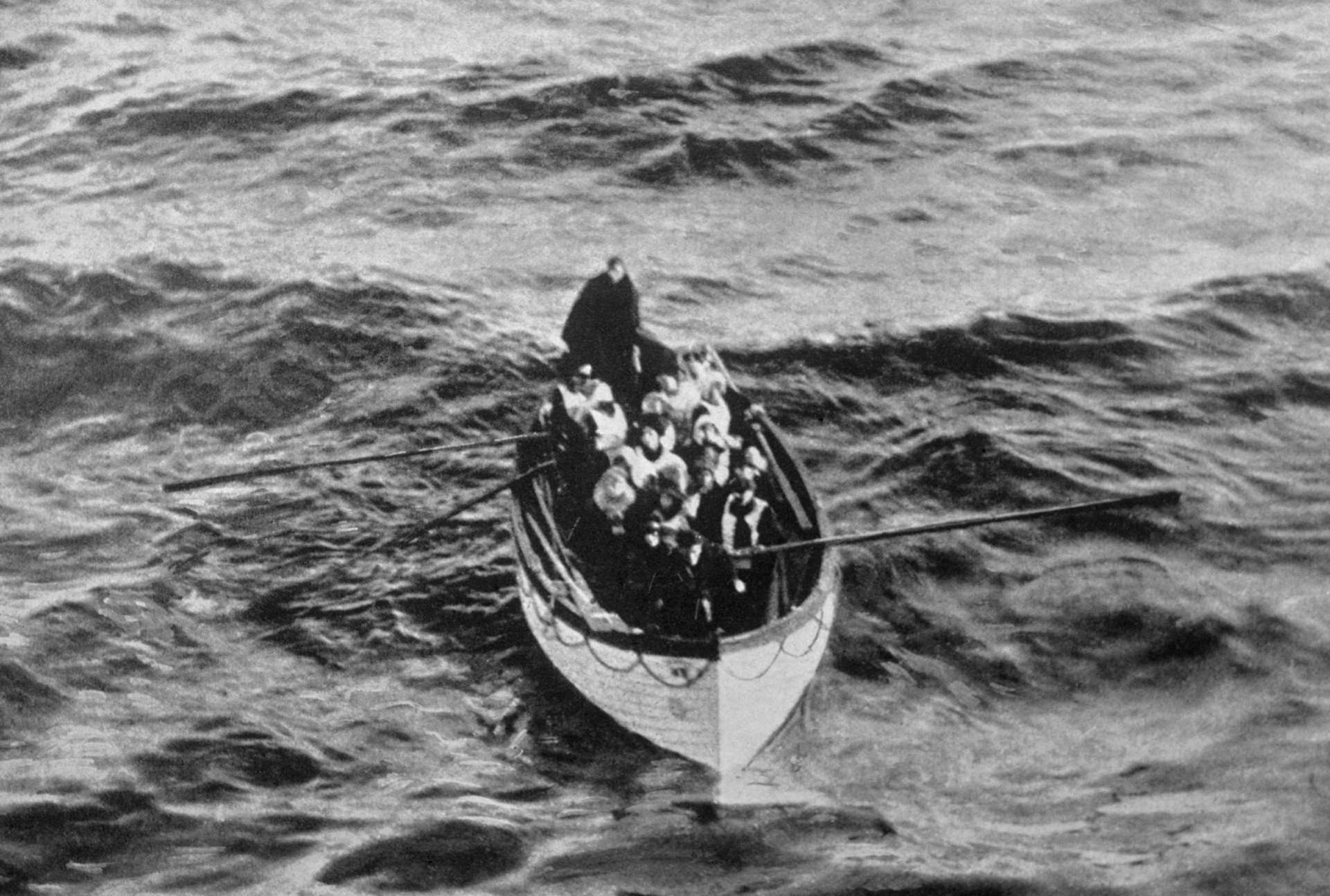
A lifeboat carrying a few survivors from the Titanic, seen floating near the rescue ship Carpathia on the morning of April 15, hours after the disaster. Titanic did not carry enough lifeboats to save all her passengers, and many of the available boats were launched carrying fewer than their 65-passenger capacity. (Ralph White/CORBIS/Corbis via Getty Images)

Titanic survivors are seen on lifeboats making their way to the Carpathia. (Universal History Archive/Getty Images)
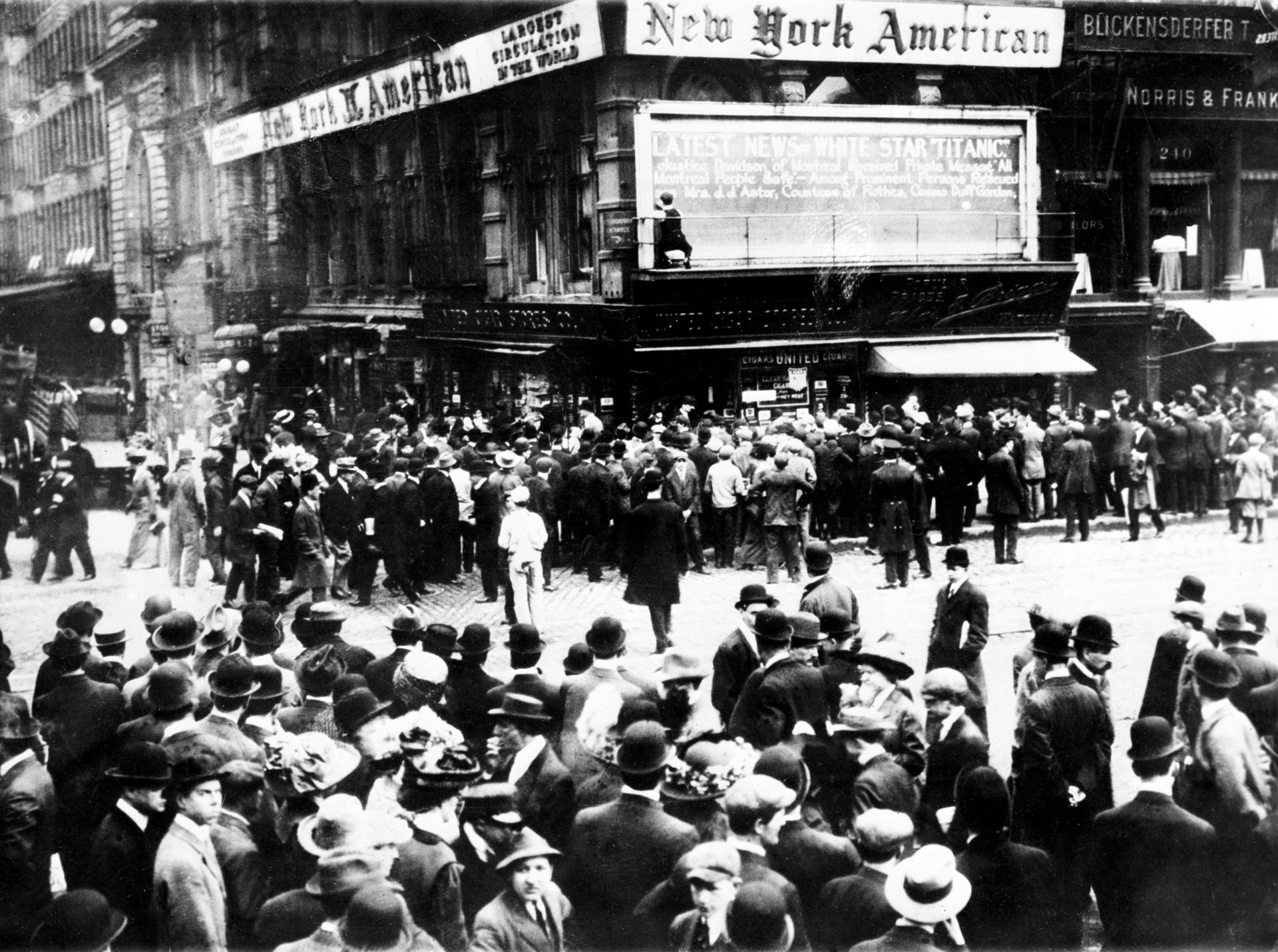
Crowds gather around the bulletin board of the New York American, in New York City, where the names of people rescued from the sinking Titanic are on display. (AP Photo)
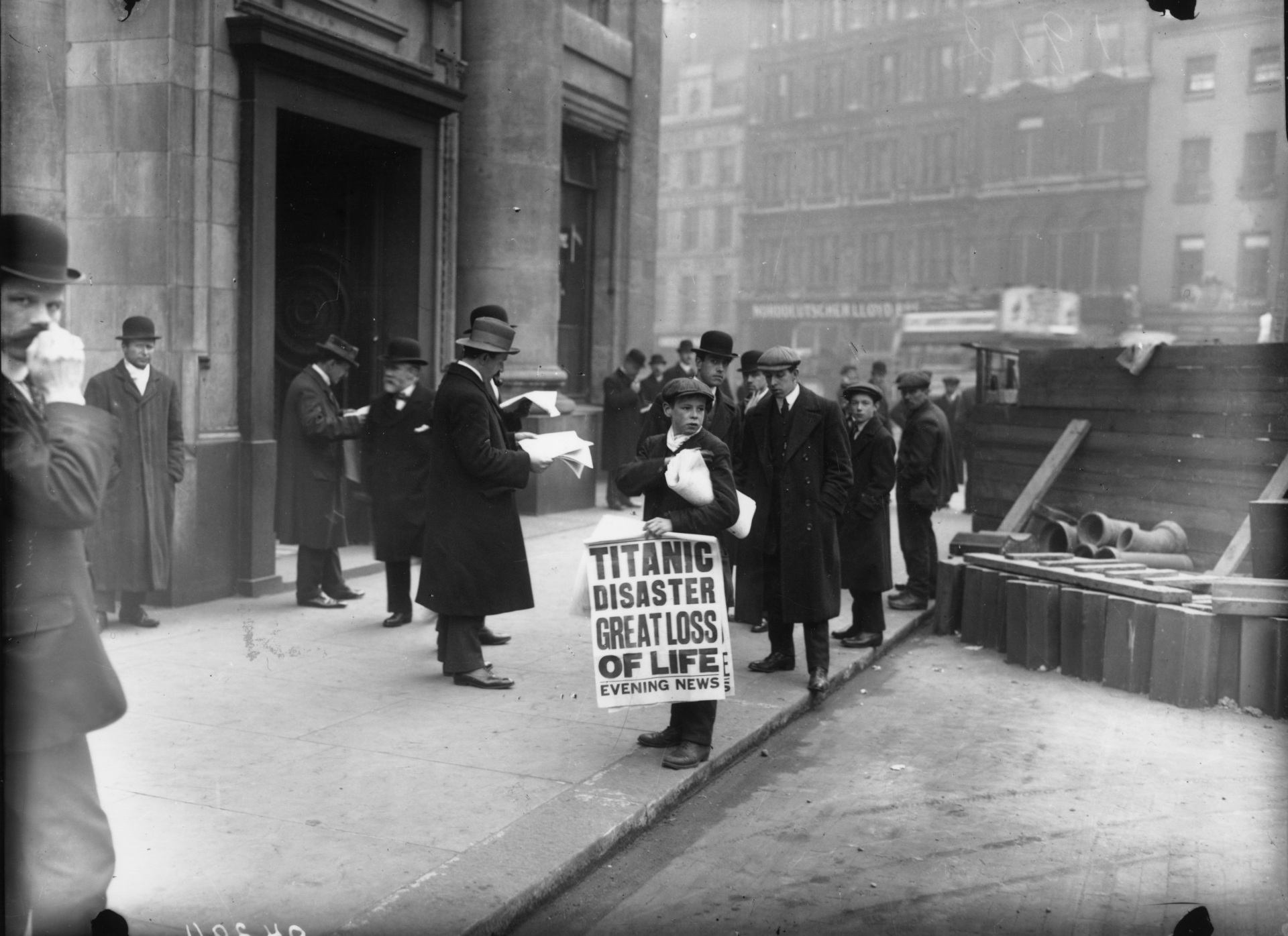
Newspaper boy Ned Parfett sells copies of the Evening News telling of the Titanic maritime disaster, outside Oceanic House, the London offices of the Titanic’s owner, the White Star Line, in Cockspur Street, London, 16 April 1912. Six years later Parfett died whilst serving in France during World War I. He was killed in a German bombardment on 29th October 1918, 13 days before the end of the War. (Topical Press Agency/Hulton Archive/Getty Images)

A newspaper’s montage of the brief career of the ‘Titanic’, in photographs and illustrations. (Hulton Archive/Getty Images)
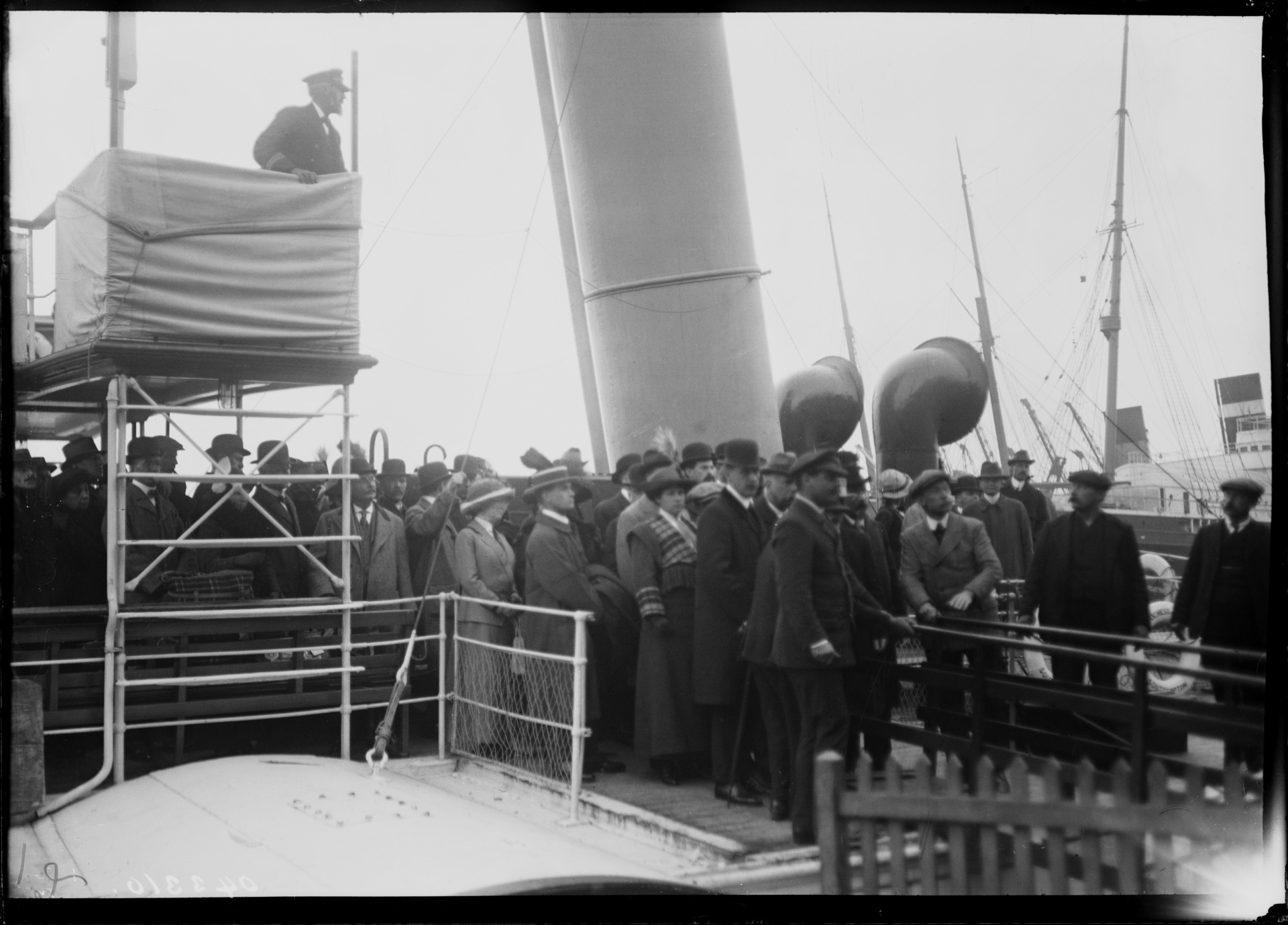
Relatives wait as 167 surviving crew members of the Titanic land at Plymouth after being taken ashore from the SS Lapland on board the paddle steamer Duchess of York, on 29 April 1912. The men had previously been rescued by the Carpathia and taken to New York. (Topical Press Agency/Hulton Archive/Getty Images)
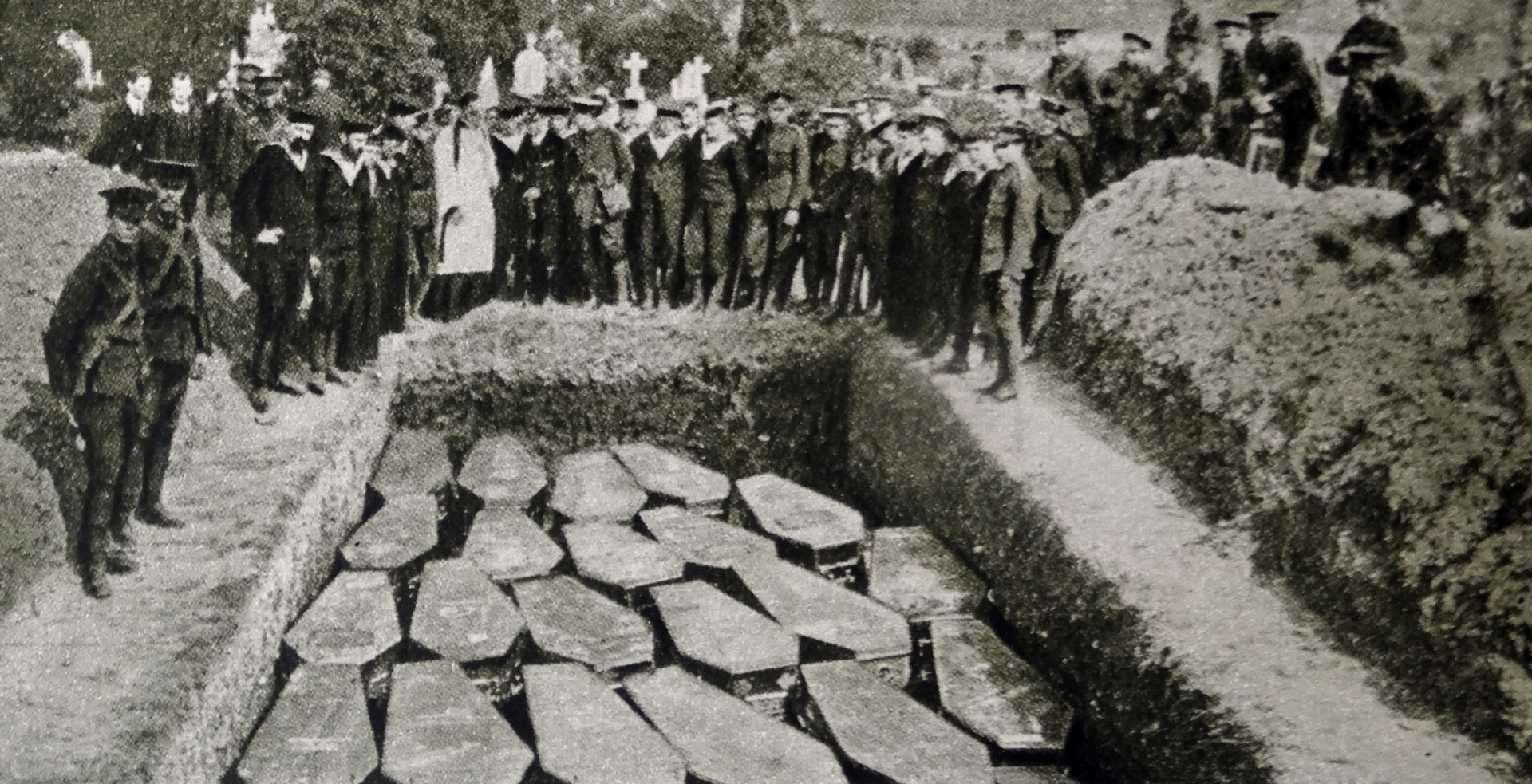
Photograph of the coffins of some of the victims of the sinking of the RMS Titanic at a mass burial. (Universal History Archive/Universal Images Group via Getty Images)

This Feb. 29, 2012 photo shows the headstone of an unknown child victim of the Titanic disaster at the Fairview Lawn Cemetery in Halifax, Nova Scotia, Canada. In 2007, DNA testing determined that he was the 19-month-old English boy Sidney Leslie Goodwin, who died onboard the Titanic with his entire family, including five siblings, as they were sailing to a new life in America. One hundred years ago, ships from this old port city on the Atlantic set out to recover the Titanic’s dead. They brought back more than 330 bodies; 150 are buried in three Halifax cemeteries. (AP Photo/Robert Gillies)

A graphic illustrates the location where the wreck of the Titanic was found upright and intact by scientists on September 1, 1985. It lies 560 miles (900 km) west of Newfoundland in water two and a half miles (4000 meters) deep by a navy ship, photographed by cameras on board the unmanned Argo vehicle. (AP Photo)

Dr. Robert Ballard of the Woods Hole Oceanographic Institution gives a thumbs up sign upon his return aboard the research vessel Atlantis II from the site of the sunken R.M.S. Titanic on July 28, 1986. Ballard leans on JASON JR., a specially designed underwater robot he used to explore the wreckage of the Titanic at its final resting place 12,500 feet deep in the North Atlantic. (AP Photo/Jim MacMillan)

View of the bow of the RMS Titanic photographed in June 2004 by the ROV Hercules during an expedition returning to the shipwreck of the Titanic. (Courtesy of NOAA/Institute for Exploration/University of Rhode Island)

The wreck of the bow of the Titanic in the Atlantic Ocean. (Xavier DESMIER/Gamma-Rapho via Getty Images)

A view of an artifact recovered from the wreck site of the RMS Titanic on display at the Titanic Auction preview at the Intrepid Sea-Air-Space Museum in New York City. (Mike Coppola/Getty Images)
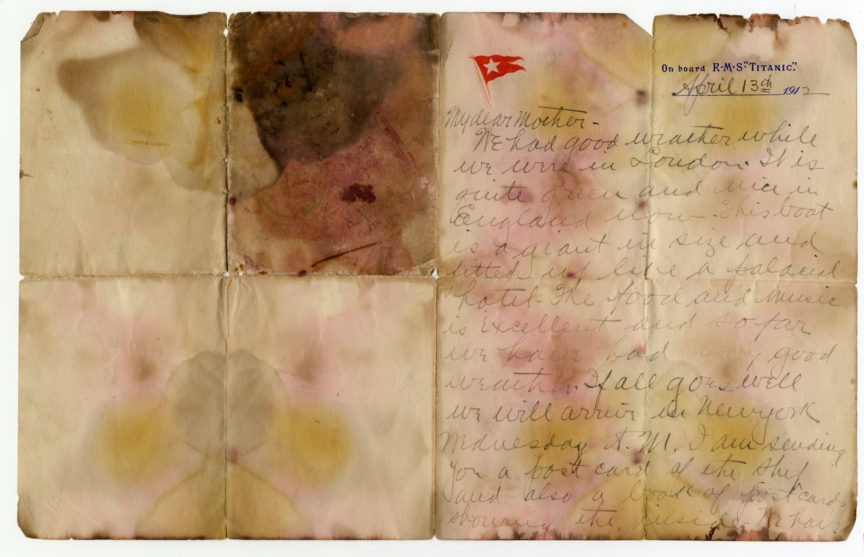
A photo of the handwritten letter on embossed Titanic stationery written by Alexander Oskar Holverson while aboard the doomed RMS Titanic, on April 13, 1912, a day before the ship sank. The letter was sold in an auction on Oct. 21, 2017, for 126,000 pounds ($166,000) in England. (Henry Aldridge and Son Actioneers via AP)
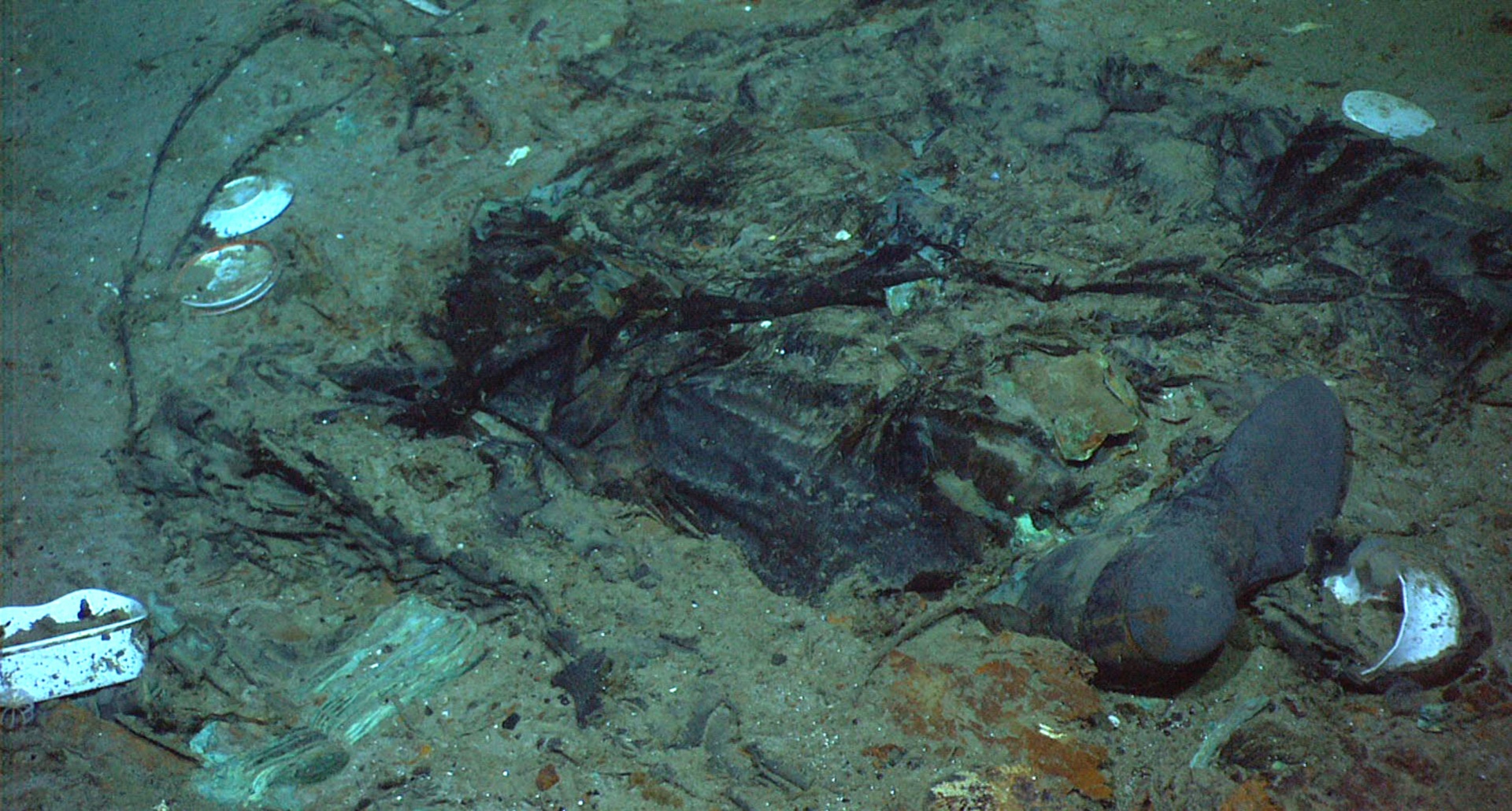
This 2004 photo shows the remains of a coat and boots in the mud on the sea bed near the Titanic’s stern. (Institute for Exploration, Center for Archaeological Oceanography/University of Rhode Island/NOAA Office of Ocean Exploration)

This image shows the deck of Titanic 12,500 feet (3.8 kilometers) below the surface of the ocean, 400 miles (640 kilometers) off the coast of Newfoundland, Canada in 1986. (Woods Hole Oceanographic Institution via AP)
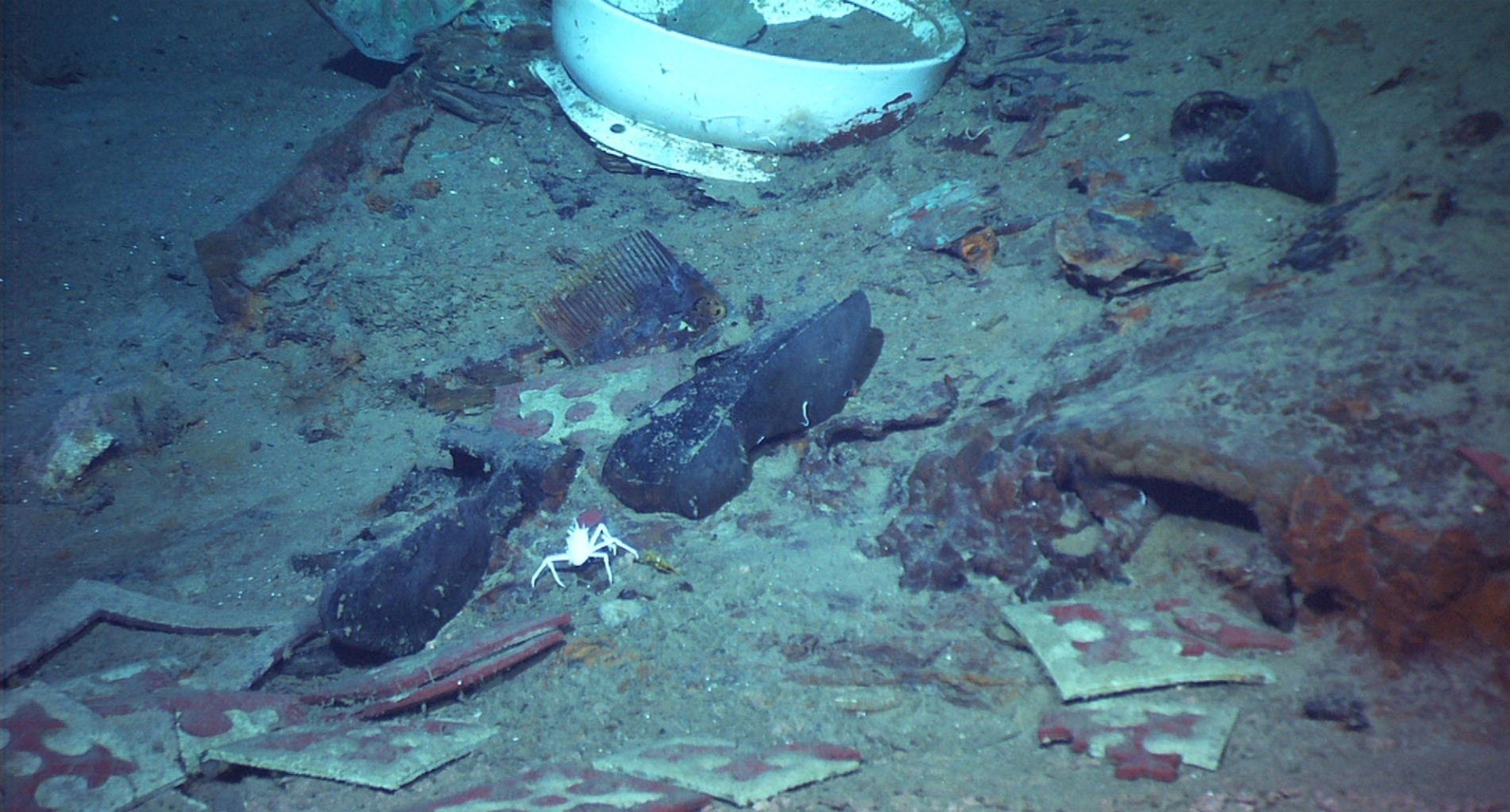
This 2004 image shows the shoes of one of the possible victims of the Titanic disaster. (Institute for Exploration and Center for Archaeological Oceanography/University of Rhode Island/NOAA Office of Ocean Exploration via AP)
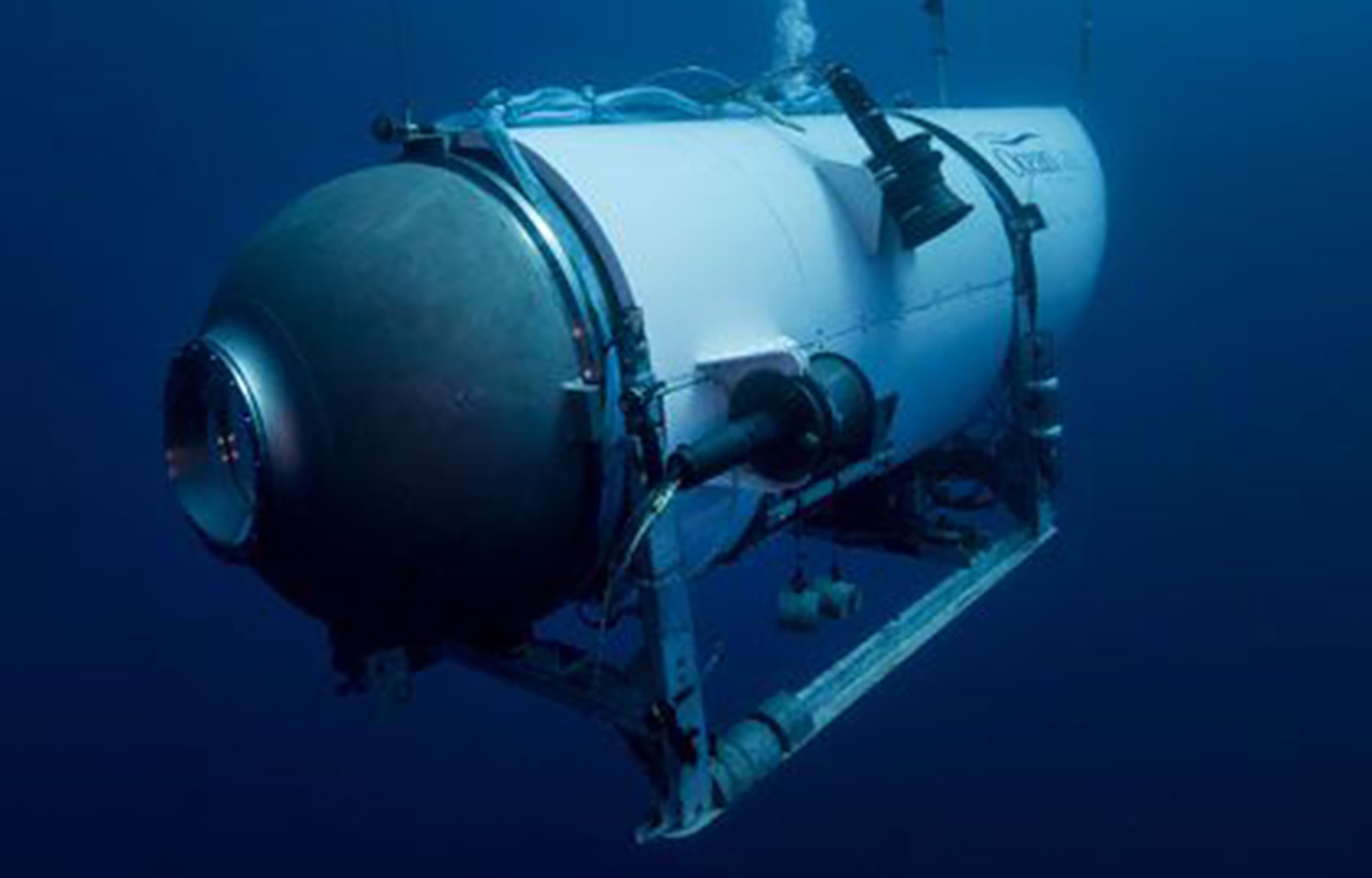
This undated photo provided by OceanGate Expeditions in June 2021 shows the company’s Titan submersible. On Monday, June 19, 2023, a rescue operation was underway deep in the Atlantic Ocean in search of the technologically advanced submersible vessel carrying five people to document the wreckage of the Titanic, the iconic ocean liner that sank more than a century earlier. (OceanGate Expeditions via AP)
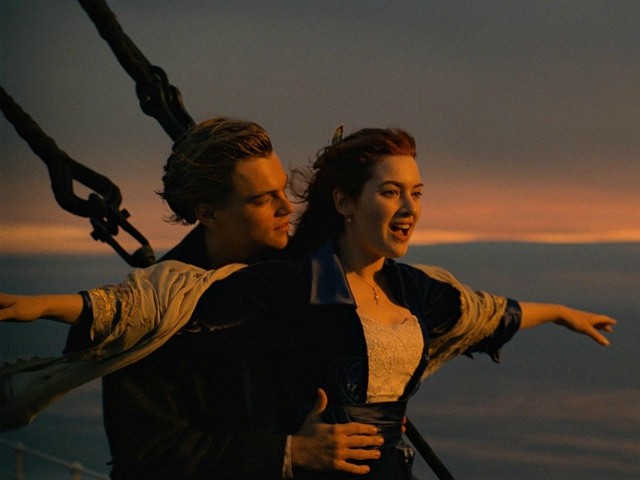
Leonardo DiCaprio and Kate Winslet in the 1997 film “Titanic” directed by James Cameron. The Academy Award-winning film made a whole new generation fascinated with the story of the doomed 1912 ocean liner.
AFP contributed to this article.

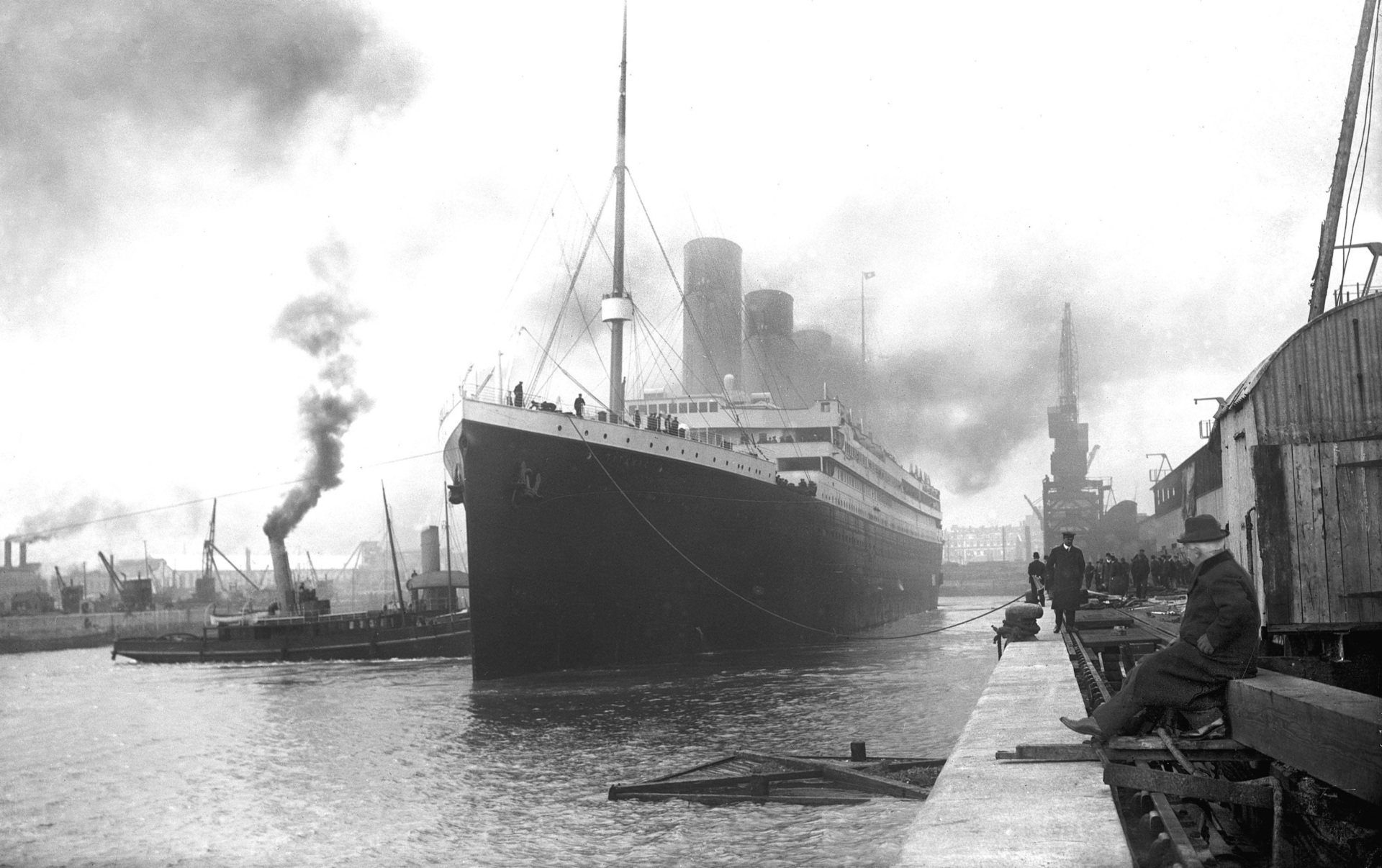
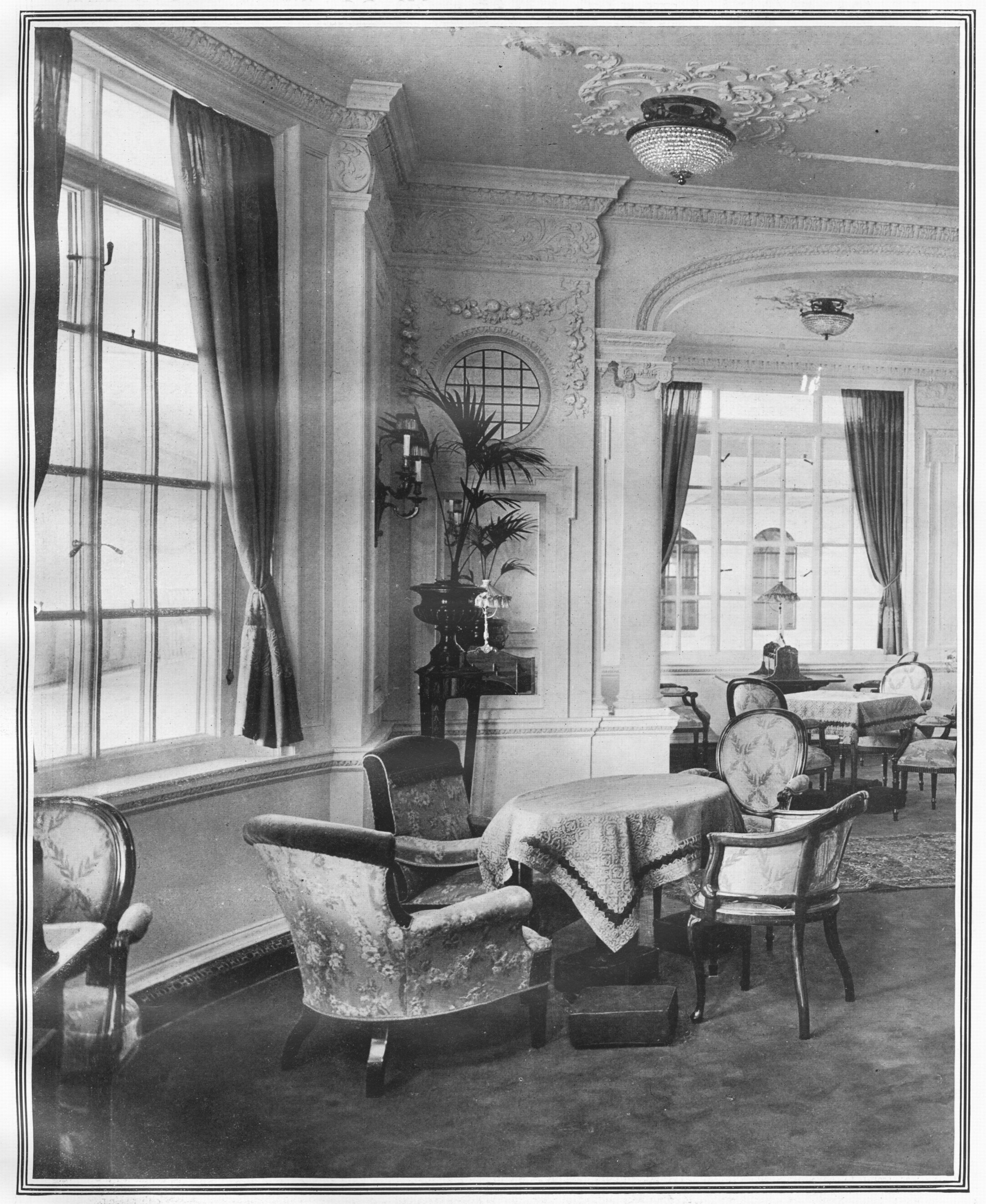
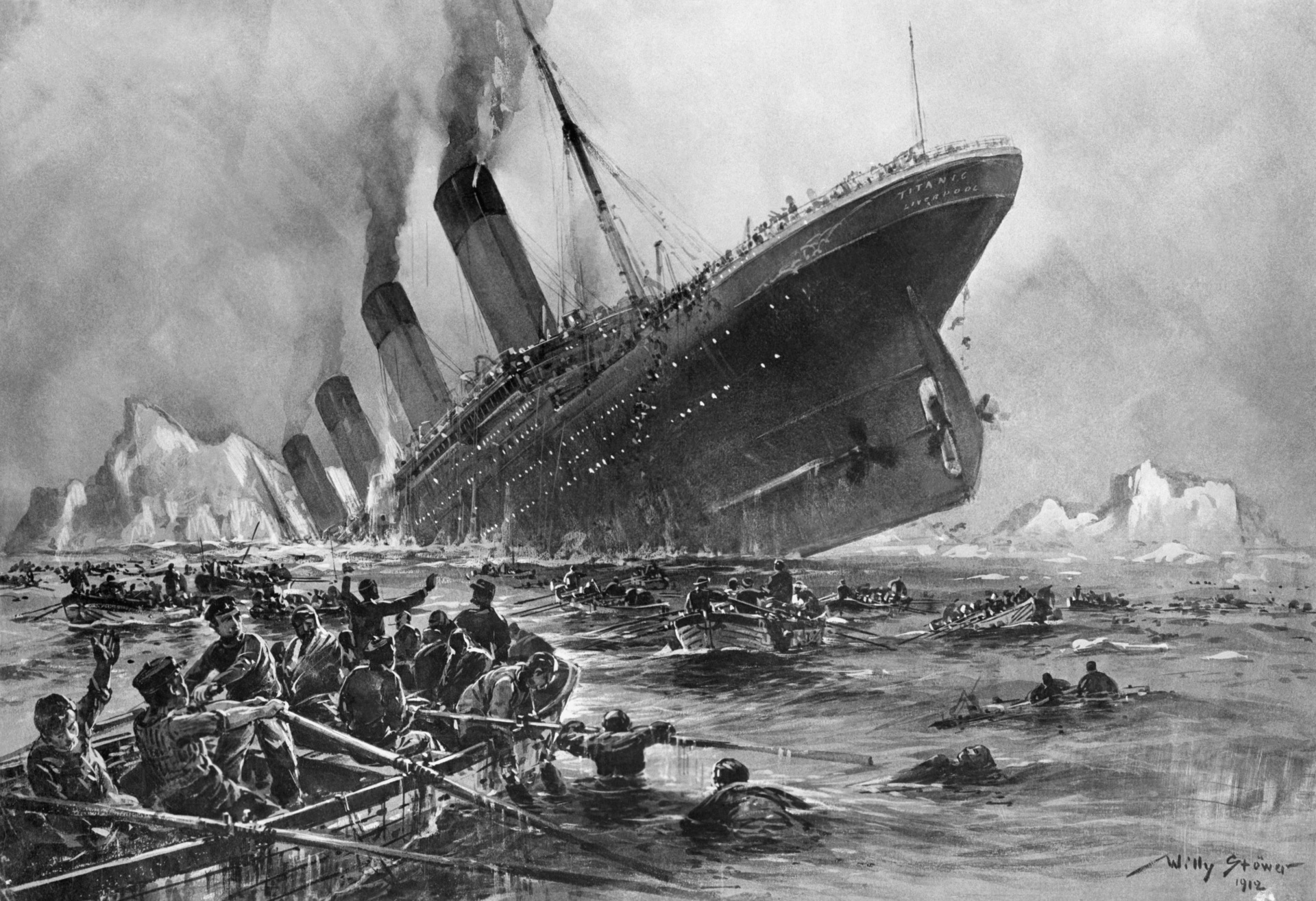

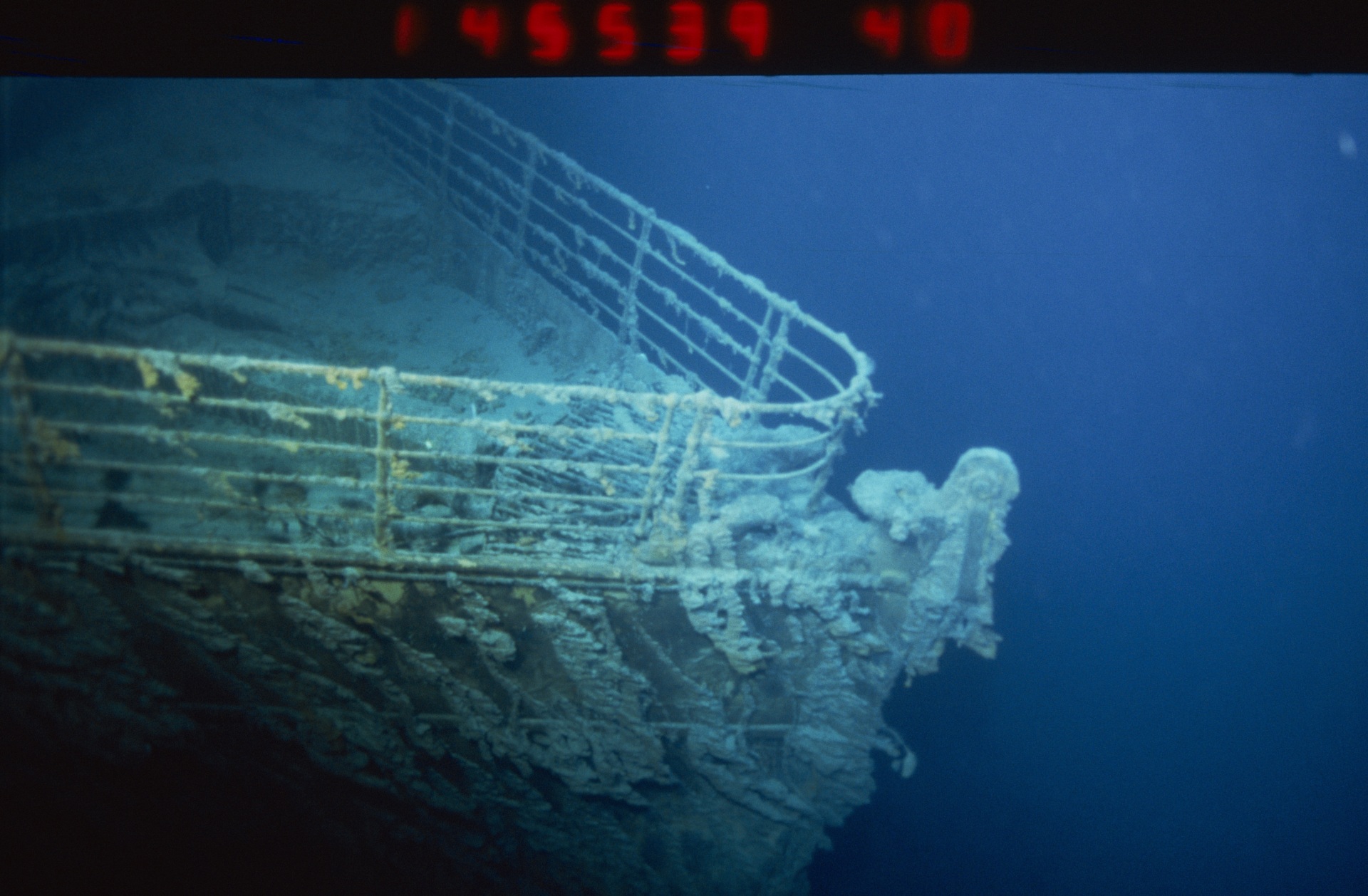
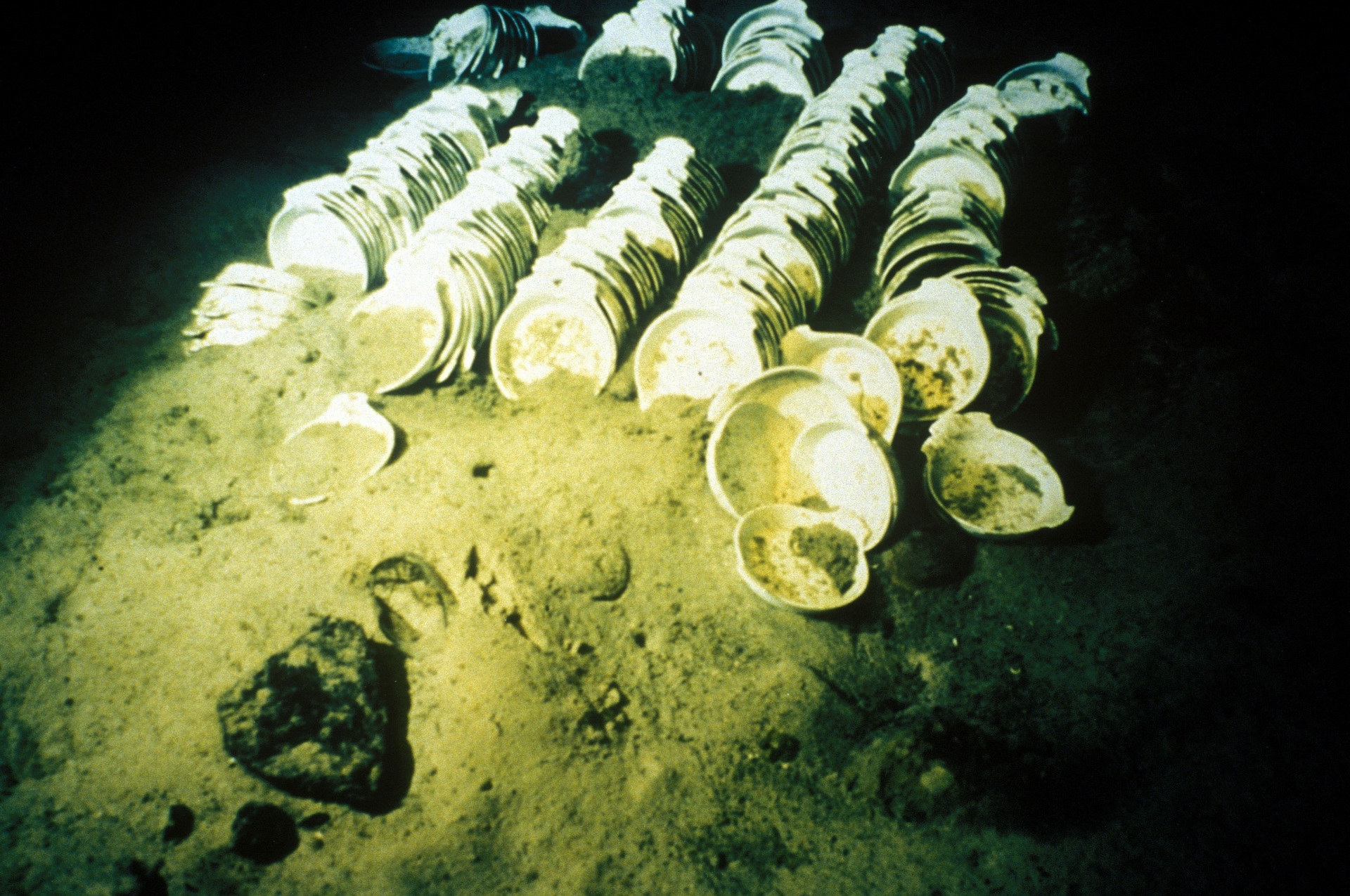
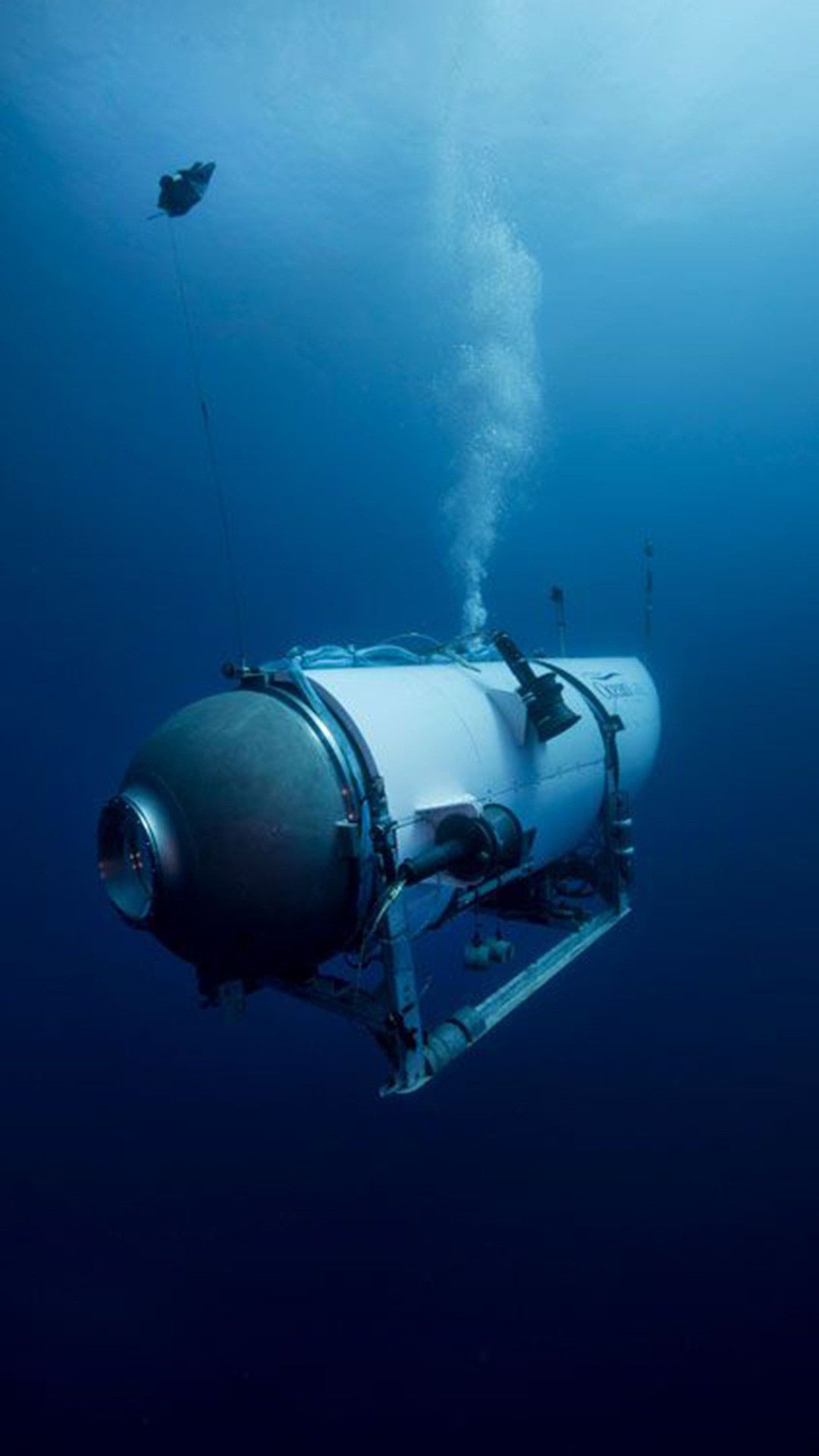
COMMENTS
Please let us know if you're having issues with commenting.